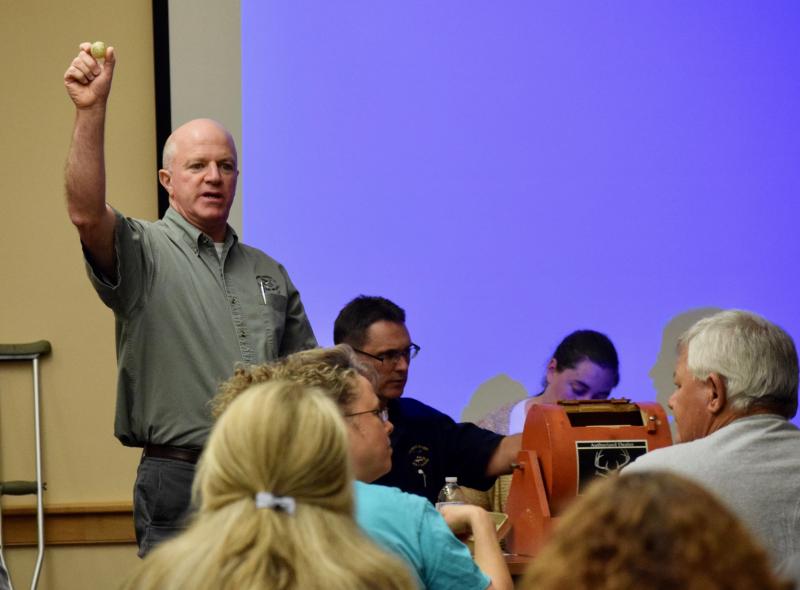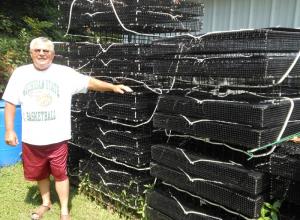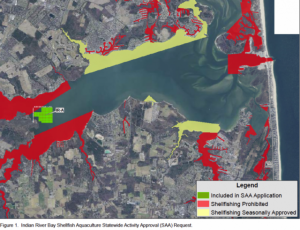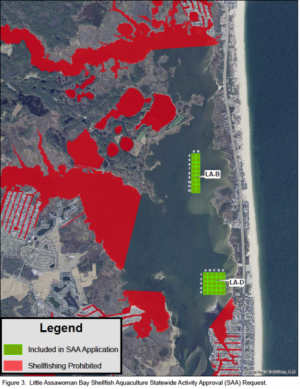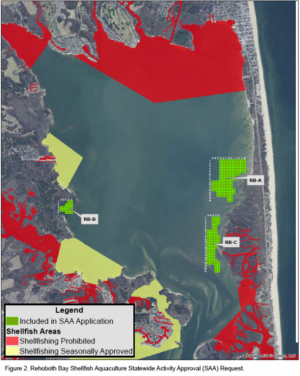Aquaculture site selection underway
Aspiring aquaculturists now are selecting sites where they plan to commercially grow oysters and clams in the Inland Bays.
About 20 people showed up for the state's first lottery drawing for lease sites May 2. Each of 58 applicants was assigned a number, which was then represented by a ping pong ball. All the balls were then tumbled bingo-style to decide the final order in which people will get to pick their sites in Indian River, Rehoboth and Little Assawoman bays.
Georgetown resident Steve Friend was the third person to apply to harvest shellfish in the state's fledgling commercial aquaculture program in Sussex County, but the luck of the draw placed him 49th in line to select his sites.
It was a fair process, Friend said, but he still may have to wait months before he can choose where he will grow and harvest oysters and clams.
“All I'm asking for is everything to be fair,” Friend said. “I was born and raised here, and my main concern is even though, yes, the people that actually do get into this hopefully will make some money off of it, it's to clean up the water.”
The applicant whose ball was chosen first gets the first pick from among 343 leasable acres in the bays. That person has two business days to select before officials move on to the next applicant, and so on, all the way through 58 people. If each applicant waits two business days to make a selection, it could take months before all applicants select sites.
Each applicant may pick up to 5 acres in Indian River and Rehoboth bays combined to harvest oysters, and an additional 5 acres in Little Assawoman Bay to grow clams. People will be allowed to harvest shellfish outside of the 343 predetermined shellfish aquaculture development areas, but they would be required to go through a lengthy and time-consuming application process for federal and state permits.
Senate Bill 77 aims to amend the state's Inland Bays aquaculture rules, specifically regarding the future of shellfish farming in Little Assawoman Bay. The bill, which was introduced to the environmental, natural resources and energy committee in the Senate May 3, seeks to permanently eliminate 75 acres once proposed as farming sites, eliminate the need to mark farmed acres with poles and limit the bay to hard clam harvests only.
For more about the bill, primarily sponsored by Sen. Gerald Hocker, go to https://legis.delaware.gov//BillDetail/25714.
However, some applicants at the lottery said they are concerned people have applied for leases with no intention of farming them.
“I don't want to get into it, but I'm sure there's people out there that probably just want to tie up some acres,” said fisherman E.J. Chalabala.
“I'm sure you're probably right,” responded Stew Michels, an environmental program manager with the Department of Natural Resources and Environmental Control. His colleague Zina Hense said those people still have to pay a $300 application fee.
Friend argued $300 could be considered a small amount if people really want to slow down what proponents of the program say is slated to become a multimillion-dollar industry.
“What's gonna happen is they're gonna go ahead and hold it up and that water's just gonna get more polluted,” Friend said. About a week after the lottery, 10 of 43 acres in Little Assawoman Bay – the only location commercial shellfish growers can grow clams – were claimed.
Millsboro resident Mark Casey, who plans to have a nursery for Delaware's new oyster growers, also said he thought the process was fair, regardless of whether some applicants may be trying to block farming activities.
“Once we get past this time next year, this should be a multistate business,” Casey said. “I think the real thing we need representatives to understand is 58 people here and 100,000 oysters per person is 5 million in oyster sales out of the state. That's huge.”
At $1 apiece, that could mean a $5 million industry. But Casey said the filtering capacity of oysters – which can filter up to 50 gallons of water each per day – outweighs the monetary benefits of the industry.
“I'm an environmentalist at heart. I think that's a part of why I want to do this,” he said. “I think what it's going to do for the environment is even more important than what it's going to do for the economy.”














